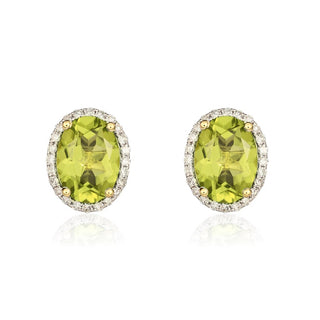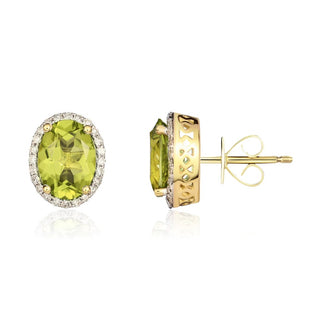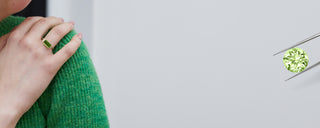
peridot jewellery guide
What are Peridots?
Peridots are captivating gemstones belonging to the mineral olivine, known for their mesmerising olive-green to bright green colours. Formed deep within the Earth's mantle, these gems boast a significant hardness of 6.5 to 7 on the Mohs scale, making them relatively durable for everyday wear. Throughout history, peridots have been treasured for their vibrant green hues, earning them a place in various types of jewellery, while also holding symbolic significance as the birthstone for the month of August, representing strength, prosperity, and positive energy for those born during this time.
Peridot Jewellery Inspiration

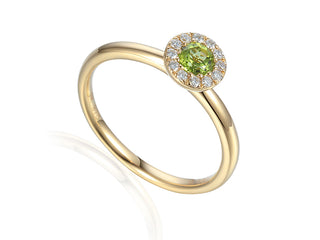

Peridot Lore and Meaning
Peridot has a rich lore and meaning that stretches back through the ages. Here are some significant aspects of its symbolism and beliefs:
- Stone of Light and Sun: Peridot's vibrant green colour has led to its association with the sun, and it has been regarded as a "stone of light" that brings warmth and positive energy into the lives of its wearers.
- Protection and Healing: In ancient times, peridot was believed to provide protection against evil spirits and nightmares. It was also thought to have healing properties, particularly for ailments related to the heart, lungs, and eyes.
- Empowering Growth and Transformation: Peridot's green colour, reminiscent of nature, is linked to growth and transformation. It is believed to inspire personal growth, encouraging individuals to embrace change and develop a positive outlook on life.
- Talisman for Relationships: Peridot has been considered a stone of love and fidelity, believed to strengthen relationships and foster understanding between partners.
Overall, peridot's lore and meaning celebrate its vibrant beauty and spiritual significance, making it a cherished gemstone with a story deeply rooted in ancient cultures and modern beliefs alike.

Peridot Jewellery Colour Guide
WHAT ARE THE BEST SHADES OF PERIDOT FOR JEWELLERY?
Peridots come in a captivating array of green colours, ranging from delicate pale greens reminiscent of tender leaves to vibrant intense greens akin to lush forests.
Some peridots exhibit a warm yellowish-green hue, while others showcase an enchanting olive green shade with golden undertones. Each gem's unique colour, influenced by the amount of iron present, adds depth and character, making peridots a cherished gemstone celebrated for their natural beauty and the diverse expressions of the colour green.
Where does Peridot come from?

Peridot can be found in various regions across the world. Notable sources of peridot include China, the USA, Myanmar, and Pakistan. In China, peridot deposits can be found in the Xinjiang region. The United States boasts significant peridot deposits, particularly in Arizona, where the gemstone is associated with the San Carlos Apache Reservation. Myanmar, known for its rich gemstone reserves, is another prominent producer of peridot, with deposits found in the Mogok region. Pakistan is also renowned for its peridot mines, with significant finds in the Kohistan district. Each of these regions contributes to the global supply of this radiant gemstone, cherished for its alluring green hue and exquisite beauty.
In addition to being found on Earth, peridot has also been discovered in meteorites from outer space. Moreover, peridot has been identified on the Moon and Mars through various space missions and remote sensing techniques. These exciting findings not only expand our understanding of peridot's cosmic distribution but also spark curiosity about the geological processes and conditions that led to its formation on other celestial bodies.
Types of Peridot
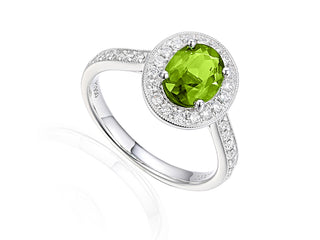
Changbai Peridot
Changbai peridot is a fascinating variety of the gemstone found in the Changbai Mountains in China. Renowned for its exceptional colour and transparency, Changbai peridot exhibits a vivid and intense green hue, often compared to the finest emeralds. The gemstones from this region are prized for their remarkable clarity and brilliance, making them highly sought after by collectors and jewellery enthusiasts.
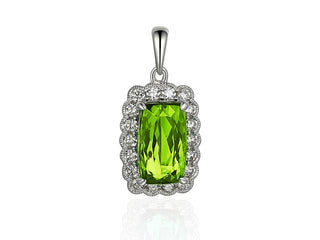
Pakistani Peridot
Known for its intense green colour, Pakistani peridot often exhibits a beautiful olive-green to deep green hue, making it highly desirable in the world of gemstones. The gem is primarily sourced from mines in the Kohistan district, where geological conditions have given rise to these stunning gems over the ages. Pakistani peridot is treasured for its exceptional clarity and brilliance, and it has become a popular choice for jewellery.
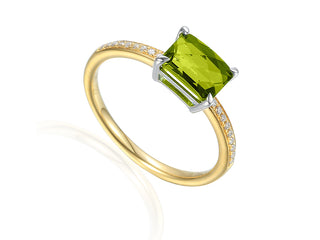
Hunan Peridot
Hunan peridot, also known as China peridot or Hunan olivine, is a captivating gemstone variety found in the Hunan province of China. Renowned for its striking green colour, this gemstone often displays shades ranging from a bright yellowish-green to a rich olive-green hue. Hunan peridot has gained popularity in both local and international markets, adorning various jewellery designs with its natural charm and distinct beauty.

august birthstone
Peridot Birthstone Jewellery
As the birthstone for the month of August, peridot symbolises strength, prosperity, and abundance. This captivating gem is believed to bring good luck, protection, and healing properties to those born in this month.
Peridot's lush green colour is often associated with nature's vitality and renewal, making it a fitting representation of the height of summer. From ancient times to the present day, peridot has been cherished as a talisman, thought to ward off negative energies and foster feelings of joy and contentment.
As an August birthstone, peridot serves as a unique and meaningful gift for those celebrating their birthdays during this time, bestowing them with the beauty and positive energy of this radiant gemstone.
Famous Peridots

Zabargad Island Peridot
Currently at the Smithsonian National Museum of Natural History, the largest peridot shown here is an impressive 311 carats and was found on the ancient island of Zabargad, or St John's Island, in Egypt. Ancient Egyptians mined this island for its peridot more than 3,000 years ago, and small veins of the gemstone can still be found today.
Image: Chip Clark,, Smithsonian's National Museum of Natural History
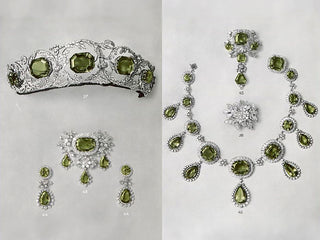
The Habsburg Peridot Perure
This magnificent piece of jewellery was created in the 19th century for Elisabeth of Austria, who was also known as Empress Sisi. The parure consists of various jewellery pieces adorned with peridots, including a tiara, necklace, earrings, and a brooch. The striking green hue of the peridots complemented Empress Sisi's beauty and personality, making her a radiant figure at various royal events.
Image: Sotheby's


